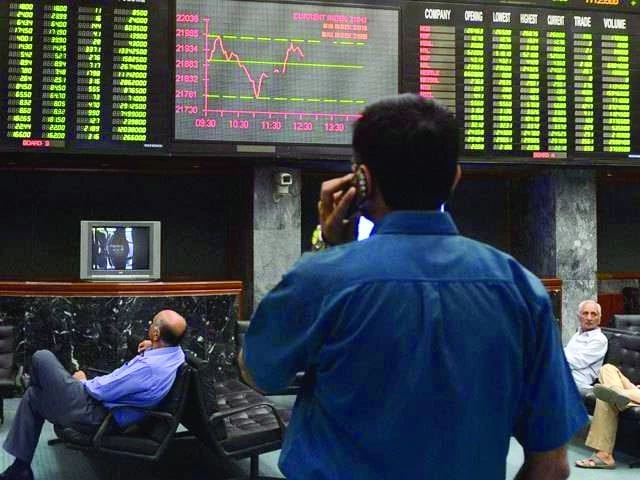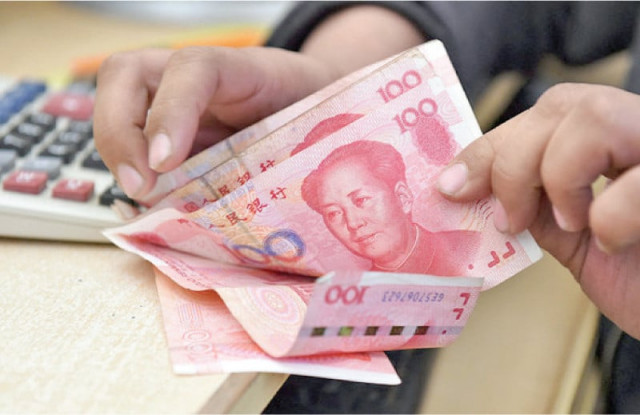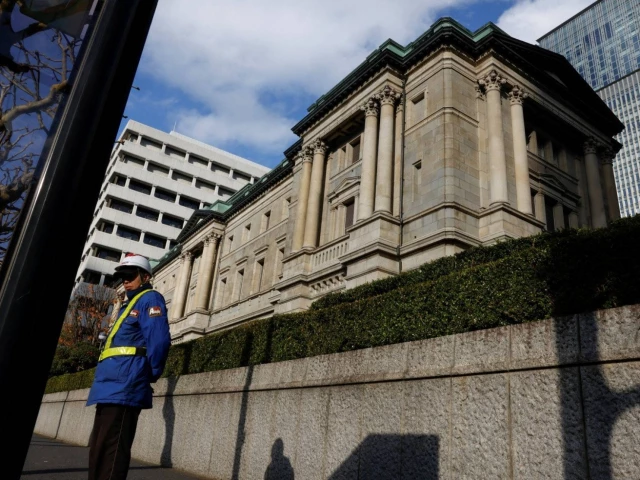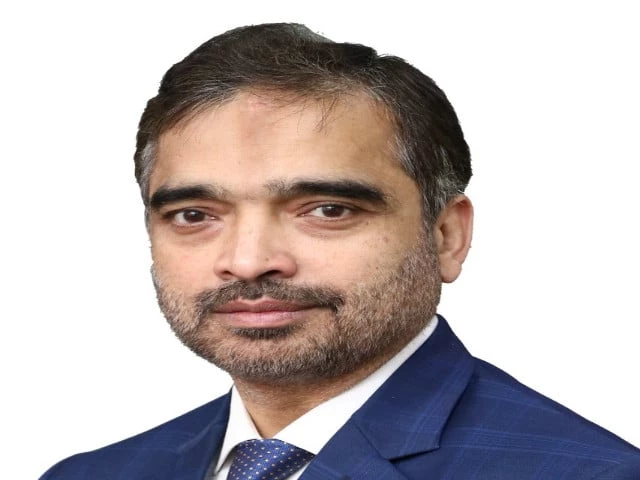Business
PSX edges up after record intra-day high | The Express Tribune

KARACHI:
The Pakistan Stock Exchange (PSX) endured a volatile session on Friday with the benchmark KSE-100 index posting a modest gain of 83.90 points to settle at 158,037.37, after briefly touching the all-time high of 159,337 earlier in the day.
The market saw strong activity in power, technology and cement sectors, while selling pressure in commercial banks capped gains.
“Another historic day at the PSX saw the KSE-100 index touch 159,337 points, supported by the strongest volumes in weeks,” noted Mubashir Anis Naviwala of JS Global.
However, heavy profit-taking emerged after hitting the record high, dragging the index down to close at 158,037, up 84 points. Power, technology and cement stocks performed strongly, while selling pressure was witnessed in commercial banks, he said.
Total traded volumes stood at 2,048 million shares as strong participation from both institutional and retail investors fueled the rally further. “The outlook remains bullish, with dips offering attractive accumulation opportunities in key sectors,” the analyst added.
Arif Habib Limited (AHL) reported that on Friday 36 shares advanced while 62 declined, where Hubco (+4.76%), The Bank of Punjab (+10%), and OGDC (+1.76%) contributed the most to the index gains. On the other side, UBL (-2.42%), Engro Holdings (-1.06%) and HBL (-1.57%) were the biggest drags. Overall, it was a solid week for the KSE-100, which gained 2.3% week-on-week.
On the macro front, AHL said, Pakistan posted a current account deficit of $245 million in August 2025, sharply higher than the $82 million deficit a year earlier, mainly due to rising import demand. This brought the cumulative 2MFY26 deficit to $624 million, compared to $430 million in the same period of last year.
Meanwhile, Pakistan Petroleum (-0.34%) announced FY25 earnings per share of Rs33.82, down 19% year-on-year, alongside cash dividend of Rs7.50 per share.
Market activity remained buoyant, with traded volumes on the KSE crossing 2 billion shares in Friday’s session, a level last witnessed in December 2021, suggesting that investors should remain cautious about potential weakness in the coming weeks.
Following a robust positive session a day earlier, the market witnessed a range-bound trading day, highlighted Topline Securities in its market review, “reflecting a tug of war between optimistic investors riding the bullish momentum and cautious participants looking to book profits ahead of the futures contract rollover week.”
The index oscillated between the intra-day high of +1,384 points (+0.88%) and the low of -431 points (-0.27%), eventually settling marginally higher by 0.05% at 158,037 points. This indecisive movement underscores investor caution amid elevated levels and the upcoming derivatives expiry, Topline said. Traded value-wise, OGDC ($21 million), PSO ($20.9 million), BOP ($15.2 million), Pakistan Petroleum ($13 million) and Hubco ($10 million) dominated the trading activity.
The top positive contribution to the index came from Hubco, OGDC, The Bank of Punjab, Systems Ltd and PSO as they contributed +663 points. On the other hand, UBL, Engro Holdings, HBL, FFC and Mari Petroleum pulled the index down by 248 points, it added.
Overall trading volumes were recorded at 2.05 billion shares compared with the previous session’s tally of 1.96 billion. The value of shares traded was Rs69.3 billion.
Shares of 486 companies were traded. Of these, 189 stocks closed higher, 266 fell and 31 remained unchanged.
Cnergyico PK was the volume leader with trading in 170.3 million shares, losing Rs0.29 to close at Rs8.12. It was followed by The Bank of Punjab with 167.3 million shares, gaining Rs2.38 to close at Rs26.26 and WorldCall Telecom with 163 million shares, losing Rs0.10 to close at Rs1.68. Foreign investors sold shares worth Rs1.37 billion, the NCCPL reported.
Business
Why Croatia’s capital wants to hold the best Christmas market

Guy Delauney Balkans correspondent
 AFP via Getty Images
AFP via Getty ImagesChristmas markets are not just tradition across Europe, they are big businesses that give cities a huge economic boost every December. For Zagreb, the capital of Croatia, it is an effective way of attracting tourists outside of the country’s main summer season.
The words “tourism” and “Croatia” are likely to conjure visons of sparkling Adriatic vistas during the hottest months of the year.
Tourism accounts for more than a fifth of the economy of this Balkan country, and it is keen to encourage more visitors to arrive outside of the height of summer. Yuletide frolics are a key part of that strategy.
“We’re making a transformation,” says Croatia’s Tourism Minister, Tonci Glavina.
“We are developing as a year-round tourism destination – we are not a summer destination anymore. Croatia has really made a significant development. At some point way back it was just sun and sea, but now Croatia offers many tourism products all across the country.”
Zagreb Advent, as the capital’s Christmas markets and events are collectively known, is the poster child for this approach, with billboards in neighbouring countries urging people to attend. In fact, this year the campaign has spread as far as London’s tube stations and Milan’s buses.
There are even special trains to bring visitors from Slovenia and Hungary. All of it is part of Zagreb’s push, in a very crowded field, to become one of Europe’s most popular Christmas markets.
While some cities might limit their offering to a single location, Zagreb Advent is a multi-venue spectacular that takes over large chunks of the centre.
“The entire city has become a festive ground for celebrating Christmas throughout the whole of December,” says Slavica Olujic Klapcic, who manages one of the Christmas market areas.
“What’s really special around here is that each of the locations has its own theme, and it’s a little bit different in decoration, and in the content that it offers. So for a visitor, I think it’s a good deal, because by taking a walk through Zagreb, you can see many different spots.”
Like other Christmas markets across Europe there are no shortages of the usual seasonal staples, such as sausages and mulled wine. But there are also multiple music stages, craft stalls, vendors offering traditional Croatian food, art installations, and an enormous ice rink.

“It brings life to Zagreb,” reckons Zrinka Farina, who is involved with putting on Christmas market events outside the city’s historic Hotel Esplanade, as well as a food and music market at nearby Strossmayer Square called Fuliranje – which roughly translates as “fooling around”.
But she says that Croatians are deadly serious about trying to offer Europe’s best Christmas market. “We are such a sporty nation, we love to compete – and when we do something, we really want to be the best in the world in it.”
Such has been the effort that the city has put into Zagreb Advent since it was first held in 2014 that it was voted the best Christmas market in Europe for three years in a row, from 2015 to 2017.
The competition is organised by travel website European Best Destinations, and Zagreb’s success has helped to drive visitor numbers to the city every December.
Back in 2014, the city saw 100,198 people stay for at least one night during the last month of the year. By 2024 this had more than doubled to 245,352, which the tourist board says gave the city a €100m ($117m; £88m) economic boost.

However, Zagreb has a long way to go if it wishes to catch up with Europe’s Christmas market heavyweights.
The one held in the German city of Cologne is widely reported to be the most popular. It is expected to attract four million visitors this year, with an economic impact of €229m.
Meanwhile, Austria’s capital Vienna attracts around 2.8 million visitors to its Christmas market, and France’s Strasbourg gets two million people.
Zagreb’s event also has a limited history – it is only in its 11th year. By contrast, Dresden’s Christmas market, widely considered to be the world’s oldest, was first held in 1434. Strasbourg’s began in 1570, Vienna in 1764 and Cologne in 1820.
Despite its infancy, Zagreb Advent is said to be attracting visitors from across Europe. “They come here from Italy, Spain, Bosnia, Slovenia and even the UK,” says Lucija Vrkljan, who is working as a steward at the ice rink.
“It’s a great place to be,” says Dario Kozul, the founder of BioMania, a bistro with a stall offering vegan and gluten-free food at the Hotel Esplanade Christmas market. “We have a cross-marketing situation all the time,” he adds.
“People walk into this event and test our food – they’re really very pleased with it. Then we talk about our restaurant, and within the next couple of days, we see them there.”
 AFP via Getty Images
AFP via Getty ImagesMarko Peric, dean of the Faculty of Tourism at Croatia’s University of Rijeka, agrees that Zagreb Advent brings “unusually high” numbers of arrivals and overnight stays in December.
But he cautions that the rest of Croatia’s heavy reliance on the summer season is a weakness that still needs to be addressed. “We need to work and develop our tourist offer in other parts of the year, including the winter,” he says.
“We don’t have snow, but we can offer a lot. We should rely on our gastronomy, which is well known, with many tourists arriving just because of that. And we could use other types of events like carnival in February, or sporting events.”
Tourism Minister Tonci Glavina insists that Croatia is making moves in the right direction. He points out that visitor numbers over July and August were actually slightly down on the same period in 2024.
But the country is still on course for a record-breaking year, thanks to significant growth either side of the summer peak, with around 5% more arrivals in June and September. This, says the minister, is “just perfect”, as is the 10% year-on-year rise over the first week of December.
“We are transforming Croatia to be a sustainable tourism destination, meaning about the same number of guests in peak season, developing the shoulder seasons, and of course developing other parts of the country to be main tourism destinations.”
Zagreb Advent has already shown the benefits. Although that may not be the first thing that springs to a visitor’s mind with all the traditional Croatian treats on offer.
After all, what could be better than a post-skate fritule doughnut, except perhaps a fritule with chocolate sauce.
Business
RMB valuation and limits of traditional exchange rate models | The Express Tribune

Global focus is on the Chinese currency, sparking debate over whether it is overvalued or undervalued
Foreign exchange reserves have started increasing on the back of recent loans by the AIIB, World Bank, and ADB. The reserves stand over $8.2 billion, and the IMF board is also expected to approve a $700 million tranche this Thursday. photo: file
KARACHI:
China’s merchandise trade surplus surged by $111.7 billion in November, reaching an impressive $1.08 trillion for the first 11 months of the year, a 22.1% increase compared to the same period of last year, according to official data. Western media has described the massive trade surplus as “remarkable,” but also warned that it could be “unsustainable,” citing concerns over China’s undervalued renminbi (RMB).
The soaring surplus has raised eyebrows among economists, many of whom have called on Beijing to allow the renminbi to appreciate more gradually over the next five years. They argue that a stronger currency could help boost China’s imports while providing relief to global competitors in Europe, the US, and other regions, who are increasingly losing market share to Chinese exports.
Global market attention has long been fixed on the trajectory of the renminbi, with renewed debate over whether the Chinese currency is overvalued or undervalued. Recent studies, relying on traditional neoclassical exchange-rate models, suggest that the RMB is deviating from its “equilibrium value.” However, economists warn that these conclusions are heavily influenced by the analytical frameworks used and may fail to account for the crucial role that modern financial forces play in shaping currency values.
Judging whether an exchange rate is misaligned is not simple. It’s inherently complex. Conventional neoclassical frameworks – such as the purchasing power parity (PPP) and the Balassa-Samuelson hypothesis – focus on real-economy fundamentals, including productivity, prices and the current account. These models generally view capital flows and foreign-exchange trading as short-term reactions to real economic factors, rather than as independent forces that can influence long-term exchange-rate trends.
That assumption is increasingly called into question in modern highly financialised global economy. Annual foreign-exchange trading volumes are now many times larger than global trade in goods and services, suggesting that frameworks focused primarily on trade balances and relative prices may be far removed from market realities.
Conversely, (post)-Keynesian approaches argue that capital flows, financial cycles and shifts in expectations lie at the heart of exchange-rate movements. While these approaches do not dismiss the importance of the real economy or the current account, they contend that under modern financial systems, capital movements can influence both short-term fluctuations and long-term currency trends. Exchange rates implied by PPP, they argue, may never be reached and can diverge persistently in one direction.
The two approaches, according to economists, need not be viewed as mutually exclusive. Yet continued reliance on a purely neoclassical lens risks producing serious misjudgments, particularly during periods of heightened financial volatility. A comprehensive analysis, they argue, must account for both real-economy fundamentals and financial forces, with the latter often playing a decisive role.
The renminbi clearly exemplifies this debate. When China’s position in the financial cycle is taken into account – rather than focusing narrowly on the current account or productivity – recent movements in the currency appear less anomalous. Once financial-cycle dynamics are incorporated, the RMB may not deviate significantly from any plausible notion of an “equilibrium exchange rate”, assuming such a benchmark exists at all.
Neoclassical exchange-rate theory is based on several core assumptions: efficient markets, rational agents, flexible prices and wages, and the neutrality of money. Within this framework, trade imbalances are expected to self-correct through exchange-rate adjustments. A country running a persistent current-account deficit should see its currency depreciate, while surplus countries should experience appreciation. Over time, exchange rates are assumed to converge towards levels determined by real fundamentals.
However, real-world evidence frequently contradicts these predictions. The United States, for example, has run large and persistent trade deficits for decades without experiencing a corresponding long-term decline in the dollar. In the 1990s, the US trade deficit widened even as the dollar strengthened. Similarly, China’s own experience has shown that the relationship between the RMB and the current account has been far from stable, despite the presence of capital controls.
(Post-)Keynesian economists argue that these anomalies reflect the growing dominance of financial forces. According to data from the Bank for International Settlements (BIS), daily global foreign-exchange trading reached about $7.5 trillion in 2022, dwarfing annual global trade flows of roughly $32 trillion. In such an environment, exchange rates are shaped primarily by financial transactions, capital flows and expectations rather than by trade fundamentals alone.
Under this view, exchange rates are not anchored to a stable long-run equilibrium. Instead, they reflect the cumulative outcome of short-term movements driven by investor sentiment, risk perceptions and shifts in global liquidity. Capital flows can sustain currency misalignments for extended periods, and there is no automatic mechanism ensuring that current-account imbalances are corrected through exchange-rate changes.
China’s post-2005 experience offers a case in point. Following reforms to the exchange-rate regime, the RMB underwent a period of nominal appreciation alongside rising domestic prices, resulting in sustained real effective exchange-rate appreciation. This pattern is difficult to reconcile with PPP-based mean-reversion models but is consistent with a financial-cycle perspective, in which capital inflows, rising asset prices and credit expansion reinforce one another.
More recently, the picture has shifted. Despite steady improvements in manufacturing capability and productivity upgrades, the RMB’s real effective exchange rate has depreciated. BIS data show that between January 2022 and October 2025, the RMB’s real effective exchange rate declined by around 16%. This outcome runs counter to predictions based on the Balassa-Samuelson hypothesis, which would expect productivity gains to translate into real appreciation.
Economists attribute this divergence to China’s position in a downswing of the financial cycle. As credit growth slowed, domestic demand weakened and price pressures eased, the extent to which productivity gains could support currency strength is limited. At the same time, reduced incentives for holding RMB-denominated assets contributed to periods of depreciation against the dollar.
Signs are now emerging that the financial-cycle adjustment may be nearing its end. As conditions stabilise, incentives for capital allocation into RMB assets are beginning to recover, a shift that has already been reflected in recent currency movements. Against this backdrop, analysts argue that claims of significant RMB undervaluation based solely on traditional models may be overstated.
The broader lesson, economists say, is that exchange-rate analysis must evolve with the structure of the global economy. In an era dominated by finance, capital flows and expectations, frameworks that marginalise these forces risk misreading both the causes and consequences of currency movements.
The writer is an independent journalist with a special interest in geoeconomics
Business
HDFC Bank Changes Lounge Access Norms For Debit Cards From January 10– Details Here

New Delhi: If you often use your HDFC Bank debit card for free airport lounge access, this update is important for you. The bank has changed how complimentary lounge entry works on its debit cards. Instead of simply swiping your card at the lounge, customers will now need a digital voucher to get access. Also, the minimum spending requirement has been increased, reported Moneycontrol. These new rules will come into effect from January 10, and will apply to eligible debit cardholders going forward.
How the New Lounge Voucher System Works
Once your eligibility is confirmed, HDFC Bank will send you an SMS or email with a link to claim your lounge access voucher. You’ll need to verify your request by entering an OTP sent to your registered mobile number. You will receive a voucher code or QR code after successful verification which must be shown at the airport lounge to get entry.
Minimum Spend Requirement Increased
Under the revised rules, HDFC Bank debit card users will now need to spend at least Rs 10,000 in a calendar quarter to be eligible for complimentary airport lounge access. Earlier, the minimum spend required was Rs 5,000.
However, this condition will not apply to HDFC Infiniti Debit Card holders. Customers using the Infiniti card will continue to enjoy free lounge access without any minimum spending requirement.
Eligible Transactions and Free Lounge Visits by Card Type
Only purchase transactions made using the debit card will be considered while calculating the quarterly spending requirement. Other types of transactions will not be counted, as noted by Moneycontrol.
Meanwhile, the number of complimentary lounge visits remains unchanged and continues to depend on the debit card variant:
Millennia Debit Card: 1 free visit per quarter
Platinum Debit Card: 2 free visits per quarter
Times Points Debit Card: 1 free visit per quarter
Business Debit Card: 2 free visits per quarter
GIGA Debit Card: 1 free visit per quarter
Infiniti Debit Card: 4 free visits per quarter
This means cardholders should check both their spending eligibility and card type to know how many lounge visits they can enjoy.
Which Transactions Count and Voucher Validity Explained
Only purchase transactions made using the debit card will be counted towards the quarterly spending requirement. As per Moneycontrol, the following transactions will not be included:
ATM cash withdrawals
UPI or wallet payments (GPay, PhonePe, Paytm, etc.)
Credit card bill payments made via debit card
Debit card EMI transactions
New debit cardholders will also need to meet the Rs 10,000 spending requirement to become eligible for complimentary lounge access.
Voucher Validity:
Once issued, the lounge access voucher will remain valid till the end of the next calendar quarter, after which it will expire if not used.
What This Means for Debit Card Users
With the updated lounge access rules, HDFC Bank is clearly encouraging higher card usage and digital verification. Customers who regularly use complimentary lounge benefits will now need to keep a close watch on their quarterly spending and complete the voucher process in advance. As per Moneycontrol, physical debit card swipes will no longer work from January 10, making it important for travellers to switch to the new digital voucher system.
-

 Business1 week ago
Business1 week agoHitting The ‘High Notes’ In Ties: Nepal Set To Lift Ban On Indian Bills Above ₹100
-

 Business7 days ago
Business7 days agoKSE-100 index gains 876 points amid cut in policy rate | The Express Tribune
-

 Business7 days ago
Business7 days agoStudying Abroad Is Costly, But Not Impossible: Experts On Smarter Financial Planning
-

 Sports6 days ago
Sports6 days agoJets defensive lineman rips NFL officials after ejection vs Jaguars
-

 Tech1 week ago
Tech1 week agoFor the First Time, AI Analyzes Language as Well as a Human Expert
-

 Entertainment6 days ago
Entertainment6 days agoPrince Harry, Meghan Markle’s 2025 Christmas card: A shift in strategy
-

 Business4 days ago
Business4 days agoBP names new boss as current CEO leaves after less than two years
-

 Tech4 days ago
Tech4 days agoT-Mobile Business Internet and Phone Deals











